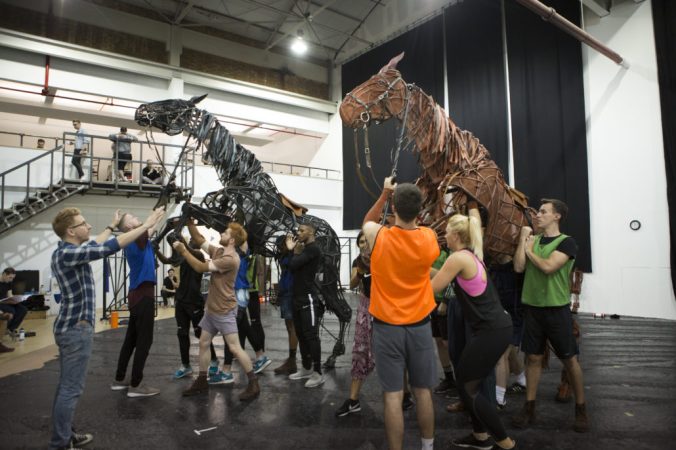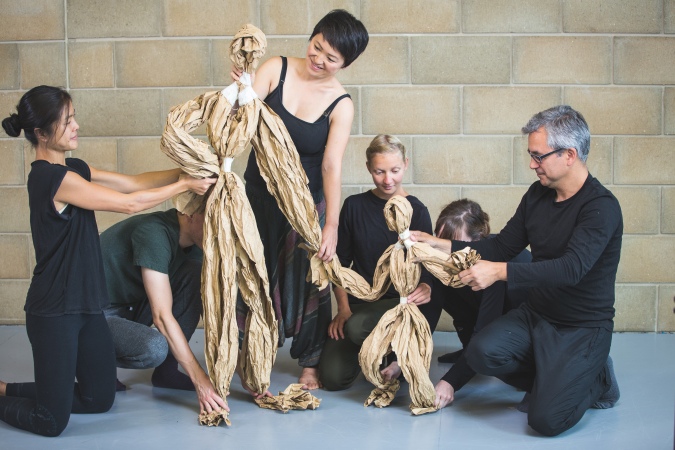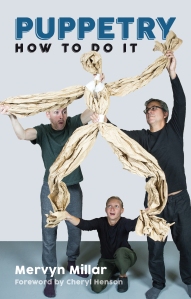 Puppetry is an artform with ancient roots, but contemporary applications – and the international success of shows like National Theatre hit War Horse proves that it has lost none of its magic.
Puppetry is an artform with ancient roots, but contemporary applications – and the international success of shows like National Theatre hit War Horse proves that it has lost none of its magic.
Here, Cheryl Henson, President of the Jim Henson Foundation, reflects on how that ‘magic’ happens, and pays tribute to director and puppeteer Mervyn Millar, author of a new book, Puppetry: How to Do It…
The magic of bringing a puppet to life fascinates me. The precision of gesture that conveys a puppet’s inner life can be breathtaking, immediately taking me out of everyday reality and into a world where anything is possible.
As the President of the Jim Henson Foundation, a grant-making organisation that supports puppetry, I have had the opportunity to meet a wide range of artists. In addition to supporting American puppeteers, our foundation produced an International Festival of Puppet Theater for a decade, presenting more than 120 shows from almost thirty countries in five festivals. We were the first in the United States to present Handspring Puppet Company, as well as many other extraordinary troupes.
A number of years later, I had the pleasure of meeting Mervyn Millar when he worked with Handspring on the National Theatre’s production of War Horse. The puppeteers in this show brought full-size horse puppets to life and interacted as real horses with human actors. The horses were extraordinarily lifelike. Although the puppeteers were in full view, the audience readily accepted the puppets as horses. With the success of War Horse, Mervyn travelled internationally to train new performers to do these roles. He worked with actors, dancers and movement performers to give them the skills they would need to be good puppeteers.

‘The horses were extraordinarily lifelike’ – the cast of War Horse in rehearsals
Puppetry is an ancient theatre form rooted in various cultures throughout the globe. Yet, it is also a contemporary art form embraced by innovative theatre artists creating new styles and techniques. That combination of old and new brings a particular dynamism to puppetry.
A simple puppet can be surprisingly appealing in today’s technologically complex culture. The prevalence of digital media and the easy manipulation of perceived reality is commonplace these days. When what is real in our everyday world becomes questionable, ‘realism’ can feel untrustworthy. In contrast, puppetry can be very straightforward. The magic feels real because you can see exactly how it is done and still choose to believe in it.
Puppetry invites the audience to participate in the theatrical experience. The puppet is not alive. No matter how well it is manipulated, everyone knows that it is not alive. It is an object that appears to breathe, to see, to think, to react – to be an emotionally whole being with an unknowable inner life, just like us. But we understand that a puppet is doing none of these things. It is an illusion that the audience agrees to go along with. It is theatre in its purest form. The puppeteer cannot force the audience to believe. The puppeteer must cajole, convince and carry the audience into the shared illusion of believing in the life of the puppet. As Mervyn puts it in his new book, Puppetry: How to Do It:
‘Something is happening when the audience believes in the puppet, and invests in it emotionally, that they recognise as being close to religious or ritual action. But we should remember that it also has the opposite energy – of playfulness and irreverence. The puppet is like a little god, or a little miracle, but also “just” a toy. It reminds us of being a child – when we imagine our toys into vivid life. I hope that the emphasis in this book on the active part the audience play in imagining the character helps to reveal how it is they who are making this connection…’
Of course, this connection to the audience does not happen if the puppet is not believably performed. The manipulation of the puppet is everything. How one trains to manipulate a puppet can vary immensely, but the fundamental principles remain the same.
I had the pleasure of observing Mervyn Millar teach puppet manipulation using the techniques in the book when he came to the National Puppetry Conference at the Eugene O’Neill Theater Center in Waterford, Connecticut, an annual gathering of international puppeteers that brings professionals and trainees together for an intense ten-day period of creative development. At this conference, I watched as Mervyn encouraged and inspired the participants to experiment with their choices, to pick up odd objects and combine them to create characters and give them movement: an old watering can and a wrench, a piece of hose and a bucket, a brass bell and some paper. All of them came to life before our eyes in new and unexpected ways. The atmosphere was calm and supportive, and the participants worked together to create unique characters.
Based on the workshops he developed for training performers for War Horse, as well as workshops like the one at the National Puppetry Conference, Mervyn has written his book to share his craft. With care and dexterity, he takes us through a basic training technique that uses simple materials like sticks and brown paper to focus attention on the movement that gives these objects the appearance of life. The exercises in the book are clear and easily reproducible for many different types of participants.

‘Giving these objects the appearance of life’ – one of Mervyn Millar’s workshops covered in his book
Puppetry: How to Do It (photo by Nick Arthur Daniel)
Although Mervyn’s book is aimed at training performers for live theatre, creating the illusion of life is a skill that can be used in the digital world as well. Digital media – video games, virtual reality, television, film, even social media – all contain manufactured reality in varying degrees. Creatures and characters within those realities can be brought to life by defined gesture and movement, just as puppets are. Whether through digital puppetry or motion capture, the human body and the human hand is still better at conveying movement that reads as life than any computer algorithm. Not only is the training outlined in this book beneficial for a range of performers, it could provide important skills for all sorts of jobs not yet invented in the creation of believable life in alternate realities.
By writing Puppetry: How to Do It and sharing the teaching techniques that he has mastered over many years, Mervyn has offered a wonderful gift to the field of puppetry. I hope that it will be used widely to introduce adventurous spirits to this dynamic art form.
The above is taken from the Foreword to Puppetry: How to Do It by Mervyn Millar. Written by an experienced theatre and puppetry director, the book is a practical, accessible and inspiring guide to using puppetry in theatre – the perfect entry point for anyone looking to use puppets in their productions, to explore what puppets can do, or to develop their puppetry skills.
Get your copy of Puppetry: How to Do It for just £11.24 (that’s 25% off) – enter code PUPPETRYBLOG25 when ordering online here.
Cheryl Henson is the President of The Jim Henson Foundation and a member of the Board of Directors of The Jim Henson Company. The Jim Henson Foundation supports the creation of innovation contemporary puppet theater through grants to puppet artists and presenters. The foundation has given over 800 grants to over 350 artists.
Photograph of Cheryl Henson by Richard Termine.
